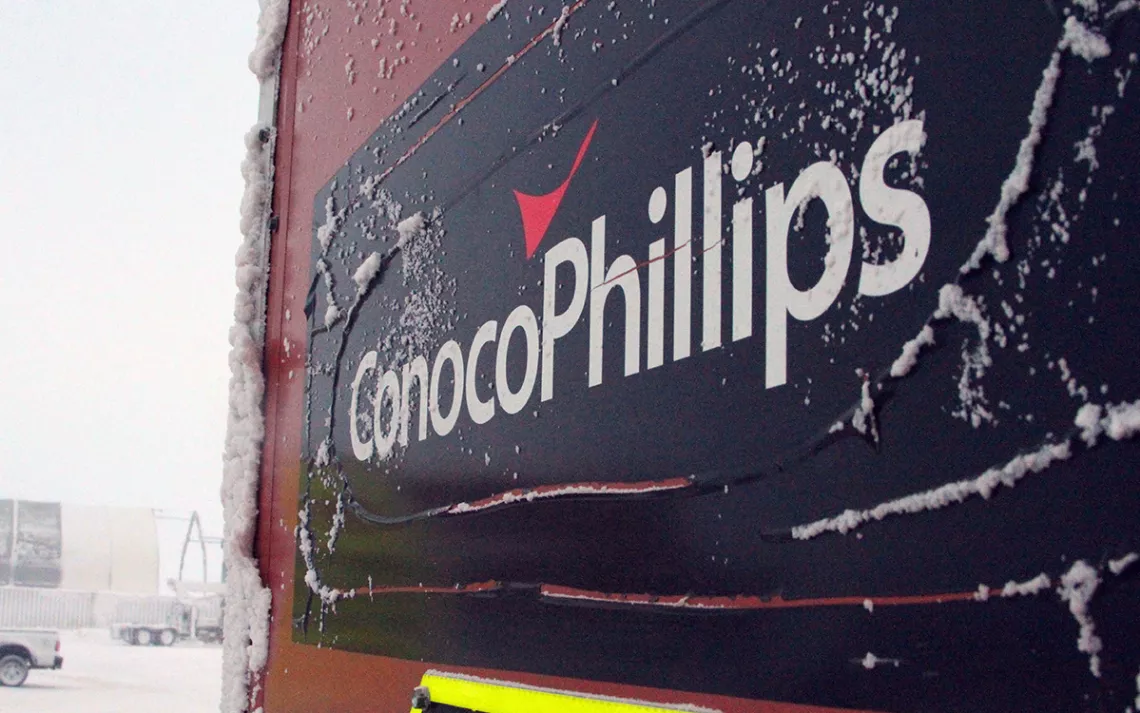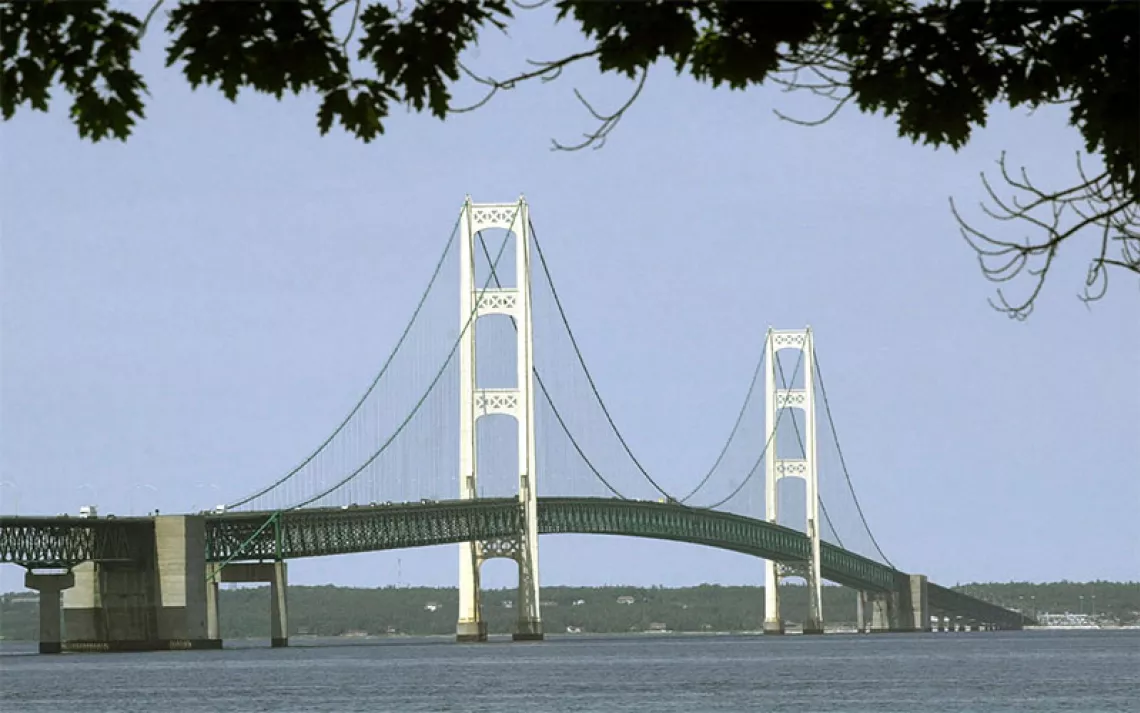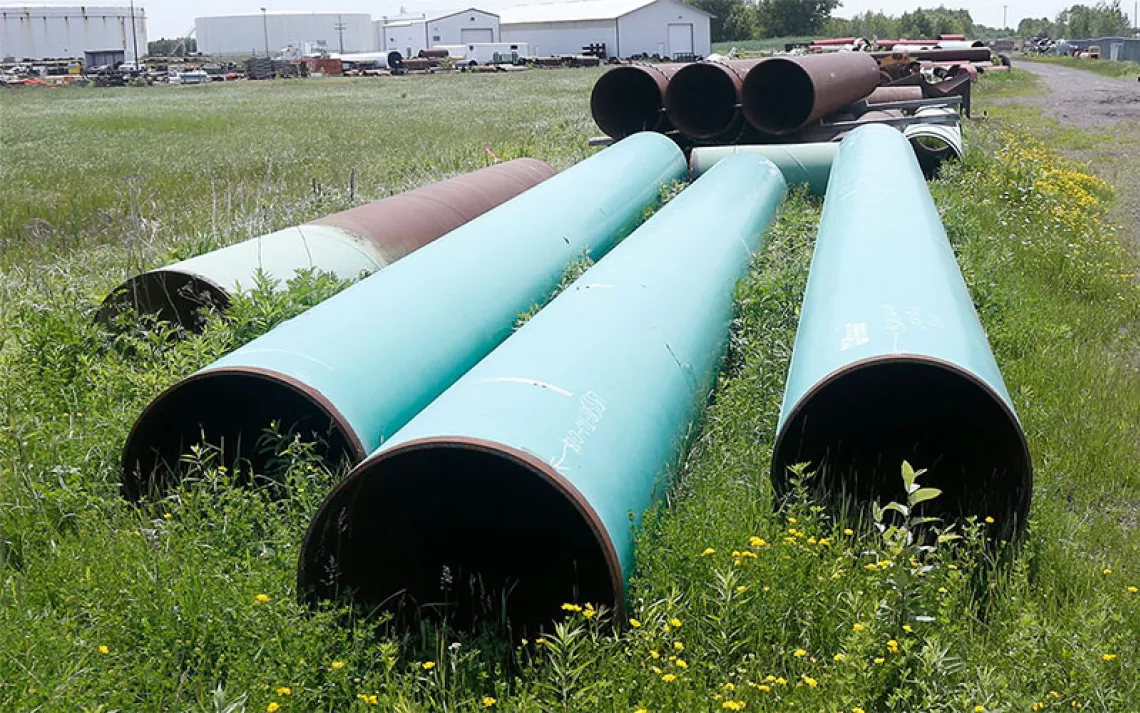Will the Biden Administration Greenlight ConocoPhillips’ “Carbon Bomb”?
The Alaska project, known as Willow, would be the biggest oil and gas development on federal land

Photo by AP Photo/Mark Thiessen
In early March, the Biden administration is expected to issue one of its most consequential decisions related to the future of oil and gas development on public lands. Known as Willow, the ConocoPhillips project on Alaska’s North Slope would allow for more than 200 new wells and produce an estimated 278 million metric tons of greenhouse gas emissions over a 30-year period. It is the single largest oil and gas development project proposed on federal land. Environmental groups have called it a “carbon bomb” and say it would effectively erase much of the progress the administration has made on achieving its climate goals.
Not surprisingly, Willow has created a political dilemma for the White House, one that was on full display when the final environmental impact statement was released on February 1. Along with the 500-plus-page document, the Department of the Interior, which manages oil and gas development on federal land, put out a statement saying it has, “substantial concerns about the project … including direct and indirect greenhouse gas emissions and impacts to wildlife and Alaska Native subsistence.” The department also made clear that the final decision, which must be released no sooner than 30 days after publication of the environmental impact statement, could see further reductions in the scale and scope of the project or terminate it altogether. At a press briefing later that day, Karine-Jean Pierre, responding to a question about Biden’s climate record, underscored the fact that a final decision has not yet been made.
If nothing else, the White House, which until now has been largely silent on Willow, has injected a dose of uncertainty into the final phase of the approval process. It has left the door open for significant changes that ConocoPhillips, in an interview with Bloomberg in December, has said would be a deal breaker. Environmental groups see it as an opportunity. “The administration has said point blank that ‘no decision’ has been made on the Willow project despite moving the proposal forward in a ‘final’ environmental impact statement. We hope that as the outrage continues to pour in, President Biden and Secretary Haaland take time to reassess and reverse course,” Kristen Miller, executive director of the Alaska Wilderness League, said in an email.
Willow is part of a larger push to expand oil and gas development in the National Petroleum Reserve, a roughly 23-million-acre chunk of public land that provides critical habitat to dozens of migratory bird species, polar bears, and caribou. The roads, pipelines, and other infrastructure would come within 30 miles of Teshekpuk Lake, the largest body of water in Arctic Alaska and a haven for wildlife. It is precisely the kind of project that environmental activists had hoped the administration would stymie, especially after four years of policy that prioritized “energy dominance” in Alaska. And there were plenty of opportunities along the way to slow things down. Indeed, even the final decision could be delayed for as long as it takes the administration to make up its mind. But according to the Alaska delegation, the White House has promised to release it soon after the 30-day window expires.
“A very high bar was set by the department in getting this thing done,” said an Interior Department employee who was not authorized to speak on the record.
Willow has moved ahead with surprisingly little resistance. In May 2021, the administration announced that it would defend the project, approved during the final months of the Trump presidency, despite objections from conservation groups and the Native Village of Nuiqsut. When that environmental impact statement was struck down by a federal judge for failing to properly account for climate impacts, Conoco moved quickly to work with the Interior Department to come up with a slightly modified version—three or possibly four well pads instead of five, with some additional protections for the area around Teshekpuk Lake. It came as little surprise when the Bureau of Land Management’s new analysis identified the three-pad option as the “preferred alternative.”
ConocoPhillips called it a “major milestone in the permitting process” and said the company would be ready to begin construction this year.
Willow has also been tied up in larger political considerations for the Biden administration. The Alaska delegation, and Senator Lisa Murkowski in particular, has made clear that getting the project approved is among the most important decisions the department will make. And while the Biden administration has suspended oil and gas leases in the Arctic National Wildlife Refuge, reinstated the roadless rule in the Tongass National Forest, and effectively closed the door on the Pebble Mine in Southwest Alaska, it has done nothing to stand in the way of Willow.
Murkowski highlighted the issue during Interior Secretary Deb Haaland’s confirmation hearing (as a congresswoman, Haaland wrote a letter to then-secretary David Bernhardt opposing Willow). At the time, Murkowski, whose support as a long-standing member of the Senate Energy and Natural Resources Committee was highly sought after, called Willow the most significant project under the department’s purview. She was one of only four Republicans, along with Alaska senator Dan Sullivan, to vote for Haaland. More recently, the Alaska delegation, including newly elected House representative Mary Peltola, has called on the administration to finalize the project as soon as possible to allow for construction to begin this winter. In addition, Russia’s war in Ukraine has led to greater pressure on the administration to ramp up oil and gas production.
DOI has in fact moved quickly to advance Willow. BLM Alaska met with ConocoPhillips just weeks after the court decision striking down the Trump-era environmental impact statement in August 2021 and refused to extend the public comment period on a draft of the new document despite having made a promise to the Village of Nuiqsut that it would do so. The department has largely kept to the deadlines demanded by the Alaska delegation.
So why the last-minute hedging from the White House? Is there really any chance that the department will reverse course or put forth a plan that ConocoPhillips won’t agree to?
It seems unlikely. But the latest round of statements from the Interior and the White House point to deeper divisions at the highest levels of the administration. Perhaps Biden’s better-than-expected showing in the midterms has emboldened those who feel he should be more assertive when it comes to scaling back oil and gas development on public lands.
Willow is at odds with many of the promises made by Biden, including his pledge to reduce greenhouse gas emissions by 50 percent over the next decade. Plus the roads, pipelines, and well pads would lay the groundwork for new development in the National Petroleum Reserve in Alaska, where more than a million acres of oil and gas leases were acquired by industry in 2019. ConocoPhillips has already acknowledged that this is phase one of a much larger multistage project, the same formula it has used for more than 40 years on the North Slope. And all of this is taking place in a region warming faster than just about anywhere else in the world and where thawing permafrost poses a threat to the built environment.
In other words, there’s a lot riding on Willow. The Interior Department and the White House clearly understand this. The question is whether short-term political gain—keeping Murkowski on board as an occasional ally—is viewed as more important than taking meaningful action to address the climate crisis. It wouldn’t be the first time that has happened.
 The Magazine of The Sierra Club
The Magazine of The Sierra Club



